Exterior Design
Exploring the Beauty of James Hardie Aged Pewter
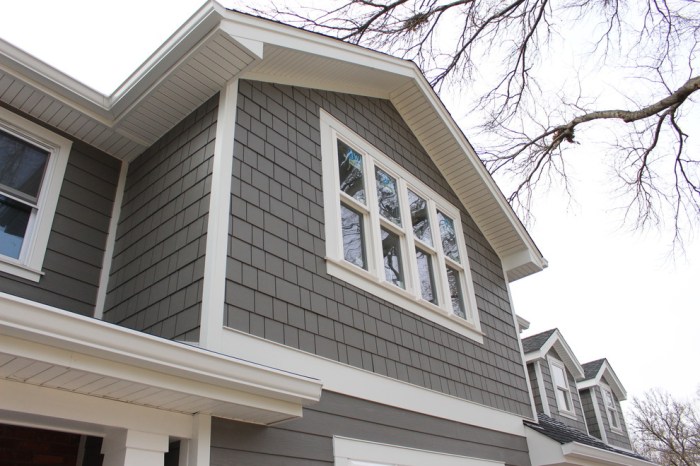
Embarking on a journey through the elegance of James Hardie Aged Pewter, this introduction sets the stage for a captivating exploration of this timeless siding option.
From its distinctive color and texture to its enduring appeal in home design, James Hardie Aged Pewter stands out as a versatile choice for exterior renovations.
Overview of James Hardie Aged Pewter
James Hardie Aged Pewter is a versatile siding color that adds a touch of sophistication to any home exterior. The color is a blend of grey and silver tones, giving it a timeless and elegant appearance.
Color and Texture
James Hardie Aged Pewter has a smooth texture that mimics the look of natural wood. The color is a subtle grey with hints of silver, creating a sophisticated and modern aesthetic for any home.
Popularity in Exterior Home Design
Aged Pewter has gained popularity in exterior home design due to its versatility and ability to complement a variety of architectural styles. It adds a touch of elegance and sophistication to any home, making it a popular choice among homeowners.
Durability and Maintenance
James Hardie Aged Pewter siding is known for its durability and low maintenance requirements. It is resistant to rotting, warping, and cracking, making it a long-lasting siding option for any climate. Regular cleaning with a mild soap and water solution is all that is needed to keep Aged Pewter looking its best for years to come.
Installation and Application
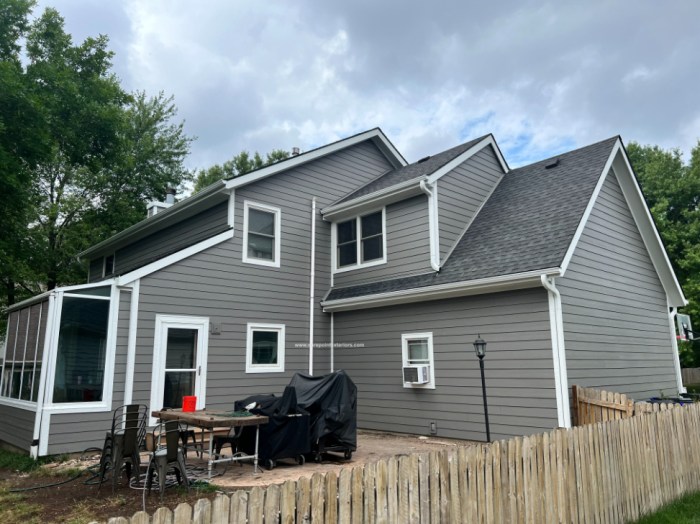
Installing James Hardie Aged Pewter siding involves several important steps to ensure a successful application. Here are some tips and comparisons to other siding materials:
Installation Steps
- Prepare the surface: Make sure the surface is clean, dry, and free of any debris before starting the installation process.
- Measure and cut: Accurately measure the dimensions of the area where the siding will be installed and cut the panels accordingly.
- Install the trim: Begin by installing the trim pieces around windows, doors, and corners to provide a finished look.
- Attach the siding: Start at one end of the wall and work your way across, making sure each panel is securely attached to the wall.
- Finish with caulk and paint: Seal any gaps with caulk and paint the siding to ensure a polished and cohesive appearance.
Tips for Successful Application
- Follow manufacturer instructions: Always refer to the manufacturer's guidelines for the best practices in installing Aged Pewter siding.
- Use proper tools: Make sure to use the right tools and equipment for cutting, measuring, and attaching the siding to prevent any damage.
- Consider professional help: If you are unsure about the installation process, consider hiring a professional to ensure a flawless application.
Comparison to Other Siding Materials
- Aged Pewter siding, like other James Hardie products, offers durability and longevity compared to traditional wood siding.
- Unlike vinyl siding, Aged Pewter provides a more authentic and textured look that mimics the appearance of real wood.
- Compared to aluminum siding, Aged Pewter is more resistant to dents and damage, making it a more practical choice for long-term use.
Benefits of James Hardie Aged Pewter
Choosing James Hardie Aged Pewter siding for your home comes with a multitude of benefits that go beyond just aesthetics. Let's explore how this particular siding option can enhance your property.
Enhanced Curb Appeal
One of the key advantages of opting for James Hardie Aged Pewter siding is the instant boost it provides to the curb appeal of your home. The subtle grey tones and textured finish of Aged Pewter can give your property a modern and sophisticated look that stands out in the neighborhood.
Long-Term Durability
- James Hardie fiber cement siding, including Aged Pewter, is known for its exceptional durability and resistance to harsh weather conditions. This means that investing in Aged Pewter siding can lead to long-term savings on maintenance and repairs.
- The non-combustible nature of James Hardie siding also provides added fire resistance, offering peace of mind and protection for your home and loved ones.
Low Maintenance
- Aged Pewter siding requires minimal maintenance compared to traditional wood siding. It is resistant to rotting, warping, and pests, ensuring that your home exterior looks pristine with minimal effort.
- The ColorPlus® Technology used in James Hardie siding ensures that the color of Aged Pewter remains vibrant and fade-resistant over time, reducing the need for frequent repainting.
Maintenance and Care
Maintaining the appearance of James Hardie Aged Pewter siding is essential to preserve its beauty and longevity. Proper care and regular maintenance can ensure that your siding stays looking great for years to come.
Guidelines for Maintaining Aged Pewter Siding
- Regularly inspect the siding for any signs of damage, such as cracks, chips, or warping.
- Wash the siding at least once a year with a mixture of mild soap and water to remove dirt and grime.
- Avoid using high-pressure washers or abrasive cleaners, as they can damage the finish of the siding.
- Trim any nearby trees or bushes to prevent branches from rubbing against the siding and causing scratches.
- Consider applying a fresh coat of paint to the siding every 5-7 years to maintain its color and protect it from the elements.
How to Clean Aged Pewter Siding Effectively
- Start by rinsing the siding with a garden hose to remove loose dirt and debris.
- Use a soft-bristled brush or cloth to gently scrub the siding with a mixture of water and mild soap.
- Rinse the siding thoroughly with clean water to remove any soap residue.
- Avoid using harsh chemicals or abrasive scrubbers, as they can damage the finish of the siding.
Comparison of Maintenance Requirements
When compared to other siding options, James Hardie Aged Pewter siding offers relatively low maintenance requirements. Unlike wood siding, Aged Pewter does not require regular painting or staining to maintain its appearance. Additionally, Aged Pewter is resistant to rot, pests, and moisture, reducing the need for frequent repairs or replacements.
Overall, Aged Pewter siding is a durable and low-maintenance option for homeowners looking for a long-lasting and attractive exterior cladding solution.
Last Point

In conclusion, James Hardie Aged Pewter emerges as a durable, visually appealing, and low-maintenance siding option that can truly transform the look of any property. Dive into the world of Aged Pewter and elevate your home's aesthetic with this exceptional choice.
Questions and Answers
Is James Hardie Aged Pewter suitable for all climate types?
Yes, James Hardie Aged Pewter is designed to withstand various weather conditions, making it ideal for different climates.
Can I paint James Hardie Aged Pewter if I want a different color?
No, James Hardie Aged Pewter comes in a pre-finished color that doesn't require painting.
How long does James Hardie Aged Pewter siding typically last?
With proper maintenance, James Hardie Aged Pewter siding can last for several decades, providing long-lasting value.
Exterior Design
Exploring the Beauty of James Hardie Aged Pewter
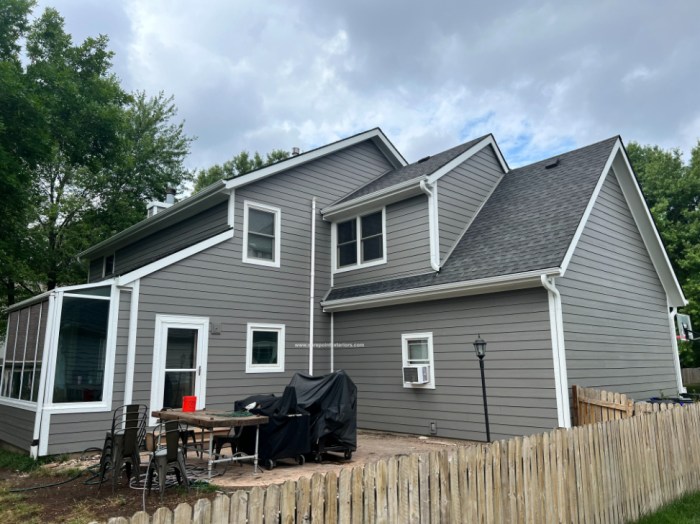
Delving into the world of James Hardie aged pewter, this captivating metal finish offers a unique charm that can transform any home design. From its distinctive color to its versatile texture, aged pewter brings a touch of elegance to architectural styles.
Let's unravel the allure of this timeless material.
Overview of James Hardie Aged Pewter
James Hardie Aged Pewter offers a unique color, texture, and finish that adds depth and sophistication to any home exterior. The color is a warm gray with subtle hints of green and brown, creating a timeless look. The texture is smooth and sleek, adding a modern touch to the design.
The finish is matte, providing a sophisticated appearance that complements various architectural styles.
Popularity and Versatility of Aged Pewter
Aged pewter has gained popularity in home design due to its versatility and ability to blend seamlessly with different architectural styles. Whether used on a traditional colonial home or a contemporary urban dwelling, aged pewter adds a touch of elegance and charm.
Its neutral tone allows for easy pairing with a wide range of colors, making it a versatile choice for homeowners looking to enhance their curb appeal.
Complementing Different Architectural Styles
- Aged pewter pairs beautifully with modern farmhouse architecture, creating a sleek and sophisticated look that contrasts with rustic elements.
- For Mediterranean-style homes, aged pewter adds a touch of understated luxury, complementing the warm tones and intricate details of the design.
- In coastal-inspired homes, aged pewter offers a subtle nod to nautical themes while maintaining a refined and classic appearance.
Installation and Maintenance

When it comes to installing and maintaining James Hardie aged pewter siding, proper care and attention are essential to ensure longevity and preserve its aesthetic appeal.
Installation Guide
- Prepare the surface: Make sure the surface is clean, dry, and free of any debris before starting the installation.
- Measure and cut: Accurately measure the dimensions of the area where the siding will be installed and cut the panels accordingly.
- Install the siding: Begin by installing the starter strip at the bottom of the wall and then work your way up, ensuring each panel is securely attached.
- Overlap and secure: Properly overlap the panels to allow for expansion and contraction, and secure them using the recommended nails or screws.
- Finish and seal: Once all the panels are installed, finish off the edges and corners neatly, and seal any gaps or joints to prevent water infiltration.
Maintenance Tips
- Regular cleaning: Periodically clean the siding with a mild detergent and water to remove dirt, dust, and other debris that can accumulate over time.
- Avoid harsh chemicals: Refrain from using abrasive cleaners or harsh chemicals that can damage the color and finish of the aged pewter siding.
- Inspect for damage: Routinely inspect the siding for any signs of damage, such as cracks or chips, and address them promptly to prevent further deterioration.
- Repainting: If the color starts to fade or wear off, consider repainting the siding with a compatible paint to restore its appearance and protect it from the elements.
Durability and Weather Resistance
When it comes to durability and weather resistance, James Hardie aged pewter siding is a top choice for homeowners looking for long-lasting performance and protection against the elements.Aged pewter siding is engineered to withstand various weather conditions, making it highly durable and resilient.
Here's how aged pewter stands up to different weather elements:
Durability Features of James Hardie Aged Pewter Siding:
- James Hardie aged pewter siding is made of fiber cement, a durable material that is resistant to rotting, warping, and cracking.
- It is also resistant to pests such as termites, ensuring that your siding remains intact and free from damage.
- The color of aged pewter is baked into the fiber cement during the manufacturing process, providing long-lasting color retention and protection against fading.
Weather Resistance of Aged Pewter Siding:
- James Hardie aged pewter siding is designed to withstand extreme temperature changes without expanding or contracting, ensuring its longevity in both hot and cold climates.
- It is also engineered to resist moisture, making it ideal for areas prone to heavy rain or humidity.
- The durability of aged pewter siding makes it highly resistant to wind damage, providing peace of mind during storms and high winds.
Longevity Compared to Other Siding Materials:
- Compared to vinyl siding, which can crack and fade over time, aged pewter siding offers superior durability and longevity.
- Wood siding is susceptible to rotting, warping, and insect damage, while aged pewter siding is resistant to these issues, providing a longer lifespan.
- Fiber cement siding, like aged pewter, is known for its longevity and low maintenance requirements, making it a cost-effective choice for homeowners in the long run.
Cost and Value
When considering the cost and value of James Hardie aged pewter siding, it's essential to look at both the initial investment and the long-term benefits it brings to your home.
Cost Factors
- Material Cost: Aged pewter siding from James Hardie may have a higher upfront cost compared to other siding options, but its durability and low maintenance requirements can lead to cost savings over time.
- Installation Cost: The installation of aged pewter siding may require professional help, which can add to the overall cost. However, the expertise ensures proper installation, maximizing the siding's lifespan.
- Maintenance Cost: Aged pewter siding is known for its low maintenance needs, reducing the cost of upkeep compared to other siding materials that may require frequent painting or repairs.
Value Added
- Curb Appeal: Aged pewter siding adds a sophisticated and timeless look to your home, enhancing its overall curb appeal and making it stand out in the neighborhood.
- Resale Value: Homes with high-quality siding like James Hardie aged pewter tend to have higher resale values due to the durability and aesthetic appeal it offers, attracting potential buyers.
Return on Investment
- ROI Calculation: While the initial cost of aged pewter siding may be higher, the long-term savings on maintenance and the increase in home value can result in a positive return on investment over time.
- Energy Efficiency: Aged pewter siding can also contribute to improved energy efficiency in your home, leading to lower energy bills and further enhancing the ROI.
Concluding Remarks
In conclusion, James Hardie aged pewter emerges as a durable and stylish siding option that enhances the aesthetic appeal of any property. Its weather resistance, easy maintenance, and lasting value make it a top choice for homeowners seeking longevity and beauty in their exterior design.
Explore the possibilities of aged pewter for a lasting impact on your home.
FAQ Explained
Is James Hardie aged pewter suitable for all architectural styles?
Yes, aged pewter's versatility allows it to complement a wide range of architectural designs, from traditional to modern.
How often should I clean aged pewter siding?
Regular cleaning with mild soap and water is recommended to maintain the appearance of aged pewter siding.
Does aged pewter siding require frequent repainting?
No, the color of aged pewter is durable and long-lasting, reducing the need for frequent repainting.
Exterior Design
Exploring New Home Siding Options: A Comprehensive Guide
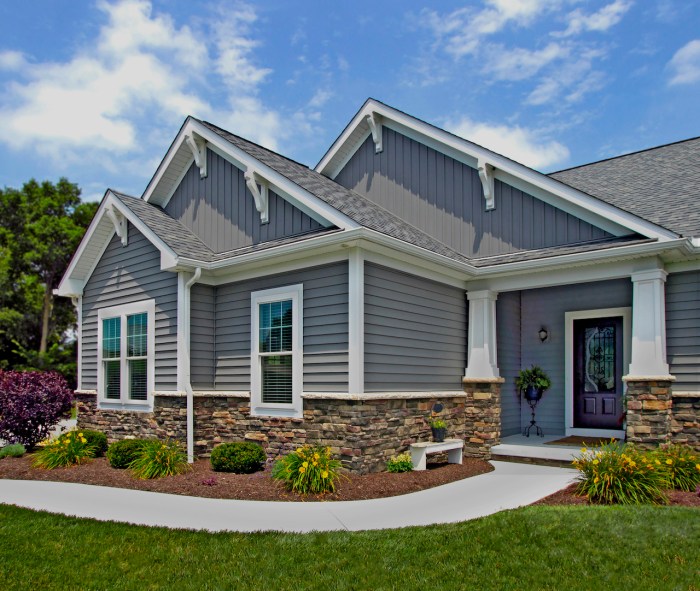
Embark on a journey through the world of new home siding options, where we unravel the diverse materials, costs, energy efficiency, maintenance, and trends that shape the landscape of modern home exteriors.
Delve into the nuances of vinyl, wood, fiber cement, and metal siding to discover the perfect fit for your home's aesthetic and practical needs.
Types of New Home Siding Options
When it comes to choosing the right siding for your home, there are several options available, each with its own unique characteristics and benefits. Let's explore the different types of siding materials to help you make an informed decision.
Vinyl Siding
Vinyl siding is a popular choice for many homeowners due to its affordability, low maintenance requirements, and wide range of colors and styles. It is durable, resistant to moisture and insects, and can last for decades with proper care.
Wood Siding
Wood siding provides a timeless and natural look to a home, adding warmth and character. While it requires more maintenance than vinyl, it can be easily repaired or replaced if damaged. Wood siding is also eco-friendly and biodegradable.
Fiber Cement Siding
Fiber cement siding offers the look of wood siding without the maintenance concerns. It is durable, fire-resistant, and can withstand harsh weather conditions. Fiber cement siding is available in a variety of textures and colors, providing versatility in design.
Metal Siding
Metal siding, such as aluminum or steel, is known for its strength and longevity. It is resistant to fire, pests, and rot, making it a low-maintenance option for homeowners. Metal siding can be painted in various colors to suit different architectural styles.
Cost Considerations
When it comes to selecting new home siding options, cost is a significant factor to consider. The cost of siding materials can vary based on quality, durability, and type of material used. It is essential to weigh the upfront cost against the long-term benefits and savings associated with each siding option.
Budget-Friendly Siding Options
- Vinyl siding: Vinyl siding is one of the most budget-friendly options available. It is low in cost, easy to install, and requires minimal maintenance over time.
- Fiber cement siding: Fiber cement siding is another cost-effective choice that offers durability and resistance to insects and rot. While it may have a higher upfront cost than vinyl, it can provide long-term savings due to its longevity.
- Engineered wood siding: Engineered wood siding is a more affordable alternative to natural wood siding. It mimics the look of real wood but comes at a lower cost and requires less maintenance.
Long-Term Cost Savings
- Energy efficiency: Some siding materials, such as insulated vinyl or fiber cement siding, can improve the energy efficiency of your home. This can lead to lower heating and cooling costs over time.
- Durability: Investing in durable siding materials, even if they have a higher upfront cost, can result in long-term savings by reducing the need for frequent repairs or replacements.
- Maintenance costs: Consider the maintenance requirements of each siding material. Some options, like vinyl or fiber cement siding, require minimal upkeep, saving you time and money in the long run.
Energy Efficiency and Insulation

When it comes to choosing the right siding for your home, considering the energy efficiency and insulation properties is crucial. The type of siding material you choose can have a significant impact on your home's overall energy consumption and comfort.
Impact of Siding Materials on Energy Efficiency
Different siding materials vary in their ability to insulate your home and prevent heat transfer. Here is a comparison of how some common siding options impact energy efficiency:
- Vinyl Siding: Offers moderate insulation properties, helping to maintain indoor temperatures and reduce energy costs.
- Fiber Cement Siding: Provides better insulation compared to vinyl, contributing to improved energy efficiency.
- Wood Siding: Natural wood siding offers good insulation but may require more maintenance to ensure long-term energy efficiency.
- Insulated Siding: Specifically designed for enhanced energy efficiency, this type of siding helps reduce heat loss and air infiltration.
Comparison of Insulation Properties
Understanding how well each siding material insulates your home can help you make an informed decision. Here is a breakdown of the insulation properties of various siding options:
| Siding Material | Insulation Properties |
|---|---|
| Vinyl | Medium insulation, improves energy efficiency |
| Fiber Cement | Good insulation, enhances energy efficiency |
| Wood | Natural insulation, requires maintenance |
| Insulated | High insulation, optimal energy efficiency |
Environmental Impact of Energy-Efficient Siding Materials
Opting for energy-efficient siding materials not only benefits your home's comfort and energy bills but also has a positive impact on the environment. By reducing your energy consumption, you contribute to lower greenhouse gas emissions and promote sustainability.
Maintenance Requirements
When it comes to maintaining your home siding, different materials have varying needs that can impact the longevity and appearance of your exterior. Here, we will delve into the maintenance requirements of different siding options and provide tips on how to care for them effectively.
Vinyl Siding
- Regularly wash with a mixture of water and mild detergent to remove dirt and grime.
- Inspect for any cracks or damage that may need repair to prevent water infiltration.
- Avoid using abrasive materials or harsh chemicals that can damage the vinyl surface.
Wood Siding
- Apply a fresh coat of paint or stain every few years to protect the wood from moisture and UV damage.
- Inspect for signs of rot or pest infestation and address any issues promptly.
Fiber Cement Siding
- Inspect for any cracks or chips in the paint finish and touch up as needed to maintain protection.
- Regularly clean with a soft brush or cloth to remove dirt and debris.
- Consider reapplying a protective sealant every few years to enhance durability.
Trends in Home Siding
When it comes to home siding, there are several current trends that are shaping the way houses look and feel. From design to colors, innovative technologies to mixed materials, let's explore the latest trends in home siding.
Modern Design and Colors
Modern home siding design trends are leaning towards clean lines, minimalistic finishes, and bold colors. Homeowners are opting for sleek and contemporary looks that make a statement. Popular colors include dark grays, blues, and even black for a more dramatic effect.
Innovative Siding Technologies
Advancements in siding technologies are gaining popularity, with materials that offer enhanced durability, weather resistance, and energy efficiency. Engineered wood, fiber cement, and metal sidings are some of the innovative options that are becoming increasingly popular among homeowners.
Mixed Siding Materials for a Modern Aesthetic
One of the emerging trends in home siding is the use of mixed materials to create a modern and dynamic look. Combining different siding materials such as wood, metal, and stone can add texture, depth, and visual interest to the exterior of a home.
This trend allows homeowners to customize their siding to achieve a unique and personalized aesthetic.
Ultimate Conclusion
As we conclude our exploration of new home siding options, we leave you with a tapestry of knowledge to guide you in enhancing the beauty and functionality of your home's exterior.
FAQ Insights
What are the most budget-friendly siding options available?
Vinyl and fiber cement are often considered cost-effective choices for homeowners looking to stay within budget.
How can I prolong the lifespan of my chosen siding material?
Regular cleaning, inspections for damage, and prompt repairs can help extend the durability of your siding.
What are the environmental benefits of energy-efficient siding materials?
Energy-efficient siding materials can reduce overall energy consumption, leading to lower carbon emissions and a smaller ecological footprint.
-
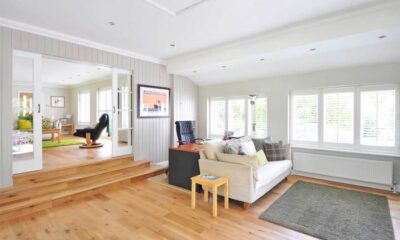
 General6 months ago
General6 months agoSmall Home Renovation Ideas: 5 Creative Ways to Maximize Space
-

 General8 months ago
General8 months agoAI-powered lifestyle design tools for home planning: Revolutionizing Efficiency and Customization
-
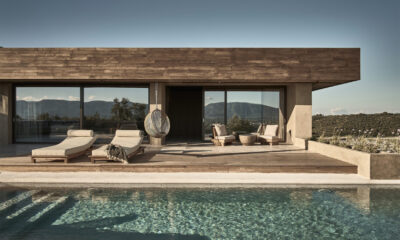
 General8 months ago
General8 months agoCaptivating Title: Interior and Exterior Design Ideas for Wellness Retreats
-
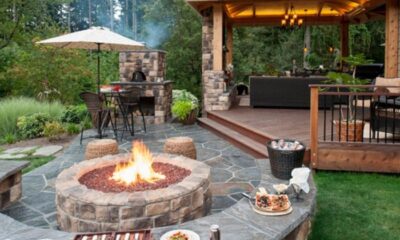
 General6 months ago
General6 months agoCaptivating Fire Pit Patio Design Ideas to Transform Your Outdoor Space
-

 General6 months ago
General6 months agoThe Ultimate Guide to the Best Architectural Rendering Services for High-End Real Estate
-

 General7 months ago
General7 months agoEco-Friendly House Paint Options: A Guide to Sustainable Painting Choices
-
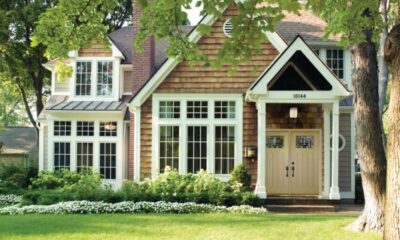
 General7 months ago
General7 months agoCrafting Energy Efficient Home Exteriors: A Guide to Sustainability
-

 General7 months ago
General7 months agoCrafting a Timeless Aura: Unveiling the Magic of Scandinavian Interior Design





